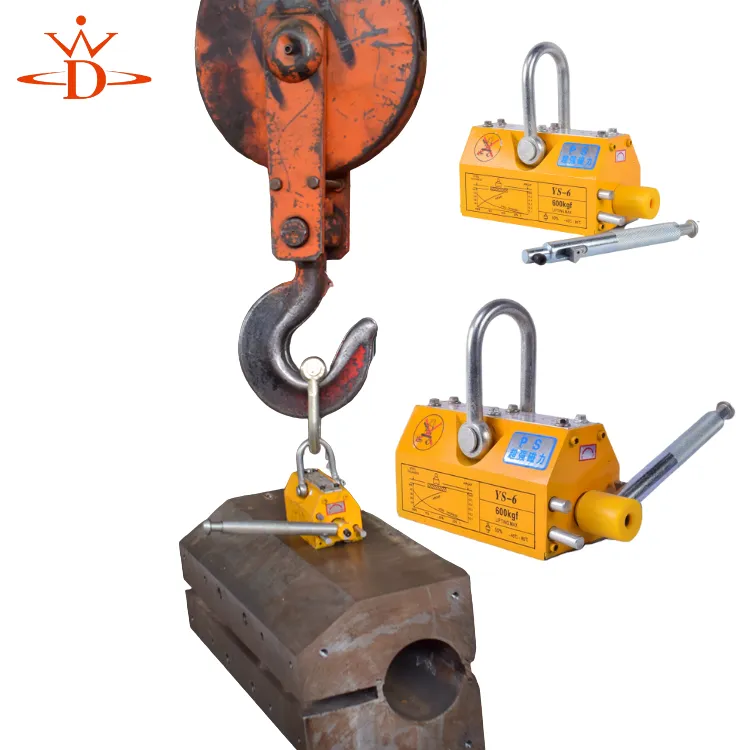rectangular lifting magnet
The Benefits and Applications of Rectangular Lifting Magnets
In various industrial and manufacturing environments, the effective handling, manipulation, and transportation of large ferromagnetic materials are vital. One of the most efficient tools for this purpose is the rectangular lifting magnet. This device, characterized by its rectangular shape and powerful magnetic field, offers numerous advantages and applications across different sectors.
What is a Rectangular Lifting Magnet?
A rectangular lifting magnet is an electromagnetic device designed to lift and move heavy metallic objects. It typically comprises a coil of wire, which generates a magnetic field when electricity flows through it. The rectangular shape allows for optimal contact area with the load, providing better grip and stability during operation. These magnets are often made from high-quality steel, which enhances their strength and durability.
Key Advantages
1. Efficiency Rectangular lifting magnets streamline the process of moving heavy ferrous materials. Instead of using manual labor or complex rigging systems, these magnets provide a simple solution that increases speed and reduces the risk of injury.
2. Safety The design of rectangular lifting magnets minimizes the chances of accidental release of the load. The even distribution of the magnetic field across the rectangular area helps secure the load firmly, ensuring that it does not slip during transport.
3. Versatility These magnets can lift a variety of materials, including sheets of steel, bars, and blocks. Their adaptability makes them valuable in multiple industries, from automotive manufacturing to scrap metal recycling.
4. Reduced Labor Costs By automating the lifting process, companies can significantly reduce labor costs. Fewer workers are needed to transport heavy loads, allowing them to focus on more productive tasks, thus optimizing overall workflow.
5. Environmentally Friendly Since rectangular lifting magnets operate on electricity and do not emit harmful substances, they contribute positively to a company's environmental footprint. They are cleaner compared to alternative lifting devices that may produce emissions.
rectangular lifting magnet

Applications
The versatility of rectangular lifting magnets opens up a wide range of applications across various industries
1. Manufacturing In factories, these magnets facilitate the easy transportation of raw materials, such as metal sheets and components, directly to the assembly line. This ensures a continuous workflow and minimizes downtime.
2. Construction In construction sites, rectangular lifting magnets can be used to move heavy steel beams and plates with ease. They help in positioning materials securely without the need for cranes in some cases, making them invaluable for on-site operations.
3. Recycling The recycling industry benefits significantly from rectangular lifting magnets. They efficiently handle scrap metal, helping to sort and move heavy materials without damaging them, thus facilitating the recycling process.
4. Shipping and Handling In warehouses and shipping yards, these magnets improve the efficiency of loading and unloading operations. They can easily grip metal containers and pallets, reducing handling times and increasing productivity.
5. Metalworking In metal fabrication shops, rectangular lifting magnets are used to hold workpieces securely in place during machining processes. This ensures precision and safety while allowing the worker to operate machinery without additional supports.
Conclusion
Rectangular lifting magnets are indispensable tools in today’s industrial landscape. Their ability to improve efficiency, enhance safety, and reduce labor costs makes them a preferred choice for businesses handling ferromagnetic materials. As industries continue to evolve and demand more streamlined processes, the reliance on such innovative solutions will undoubtedly grow. Whether in manufacturing, construction, recycling, or shipping, the applications of rectangular lifting magnets are vast and varied, providing businesses with the means to operate more effectively and safely in an increasingly competitive marketplace. Investing in such technology not only boosts productivity but also positively impacts the bottom line by minimizing both costs and risks associated with heavy lifting operations.
-
Unlock Seamless Relocation with Our Heavy Equipment Moving ExpertiseNewsJun.06,2025
-
Unleash Unrivaled Flexibility with Our Adjustable Gantry CraneNewsJun.06,2025
-
Unleash Heavy-Duty Efficiency with Our Industrial Gantry Crane SolutionsNewsJun.06,2025
-
Revolutionize Steel Handling with Our Magnetic Lifter RangeNewsJun.06,2025
-
Master Equipment Mobility with Premium Machinery Mover SolutionsNewsJun.06,2025
-
Elevate Your Material Handling with Magnetic Lifter TechnologyNewsJun.06,2025
-
YS Permanent Lifting Magnets: The Smarter Way to Handle SteelNewsMay.22,2025
